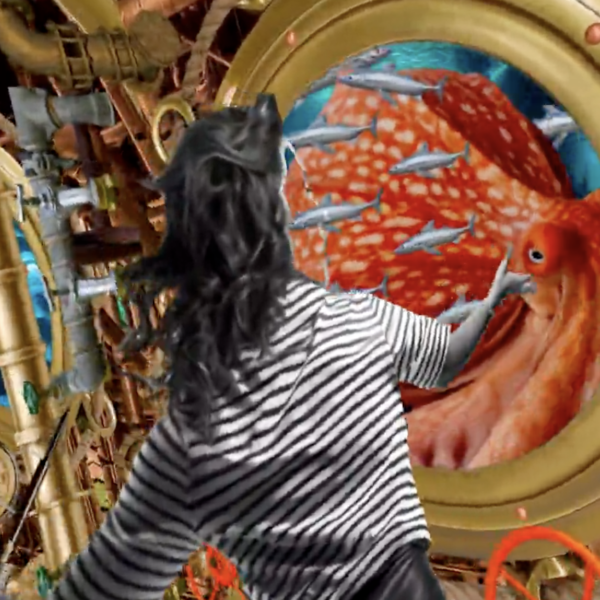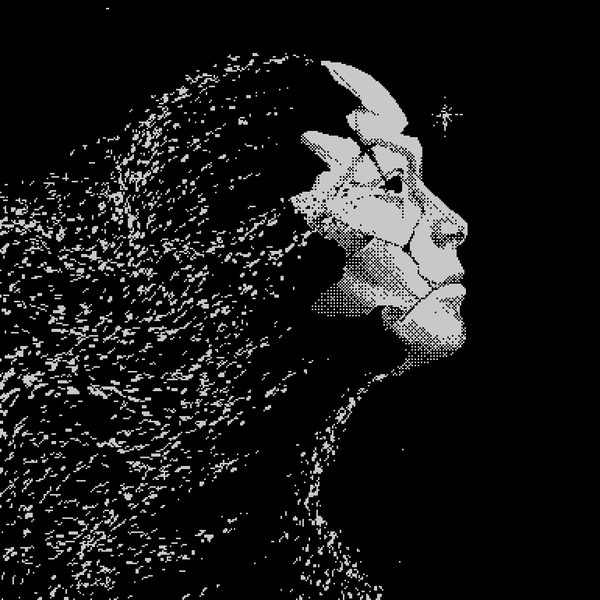The Power of Protest Art with C3
We sat down with Iranian political artist C3 to discuss his powerful protest art. C3’s digital art employs a geometric, minimalist approach. Using characters he calls “dystopians” he creates digital works that give the public a glimpse into his daily existence in modern Iran. In this interview, we dive into what it means to create protest art, the risk that comes with his creative prowess, and the freedom he is fighting for. Please note, this conversation has been edited for brevity and clarity.
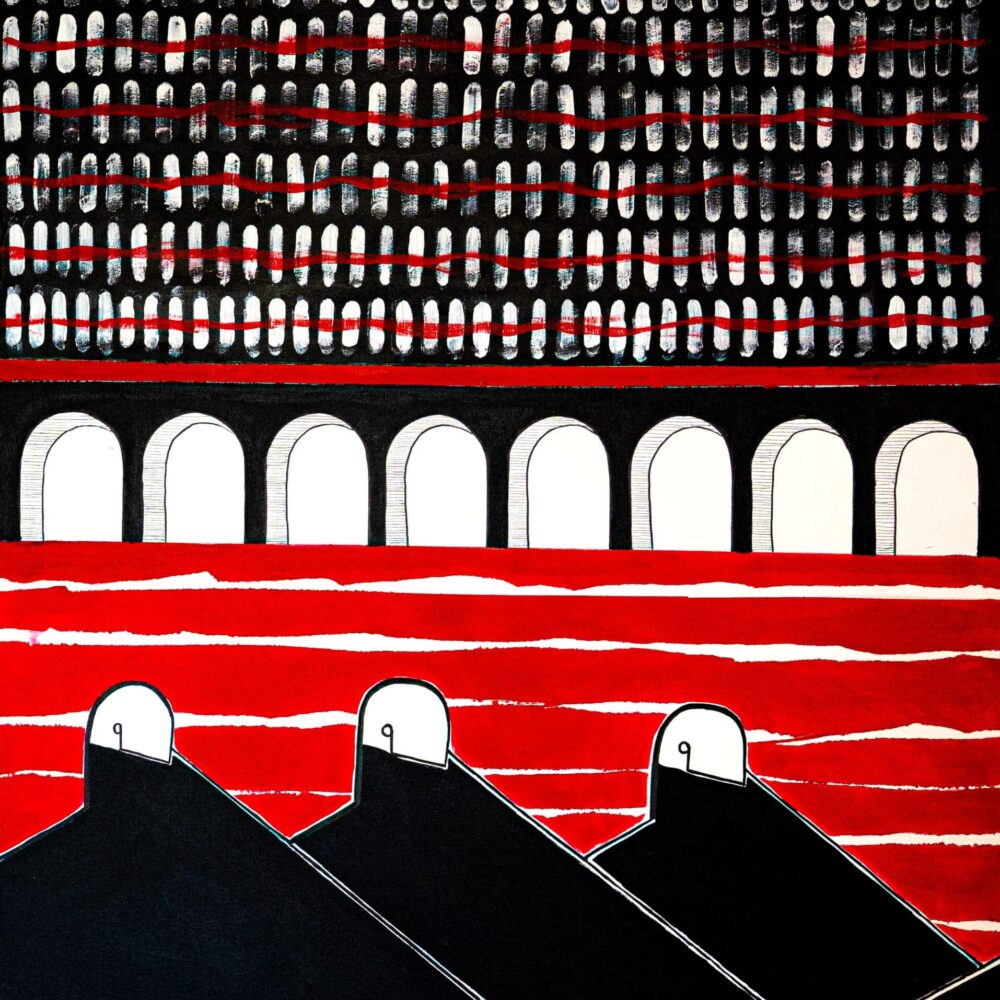
Q: What was your first memory of being an artist? When did you start creating art, loving art, and making art?
C3: I’m a very introverted person. I was an autistic child and I didn’t have many friends, maybe none at all. I always lived in my head back then. I tried to create my own world. When I was maybe five or six years old, I would draw and paint on papers and my mom would rate them “A+” or something like that. It always stuck with me. I saw that creating art could make other people happy. Also, seeing people being interested in my art was kind of fulfilling because I didn’t have the social skills to talk with people or interact with people. I kind of used that visual element of art to talk through that with people, and get that kind of human engagement. It was such a fulfilling way to talk about what was going on in my head. I continued to do that throughout the years.
Q: We’d love to hear a bit about your background, your origins, and where you grew up.
C3: I was born and raised in Iran, and I still live there. I’m in my early 30s and I’ve been doing art for as long as I can remember. My art is specifically political and social. I have a background in art. Due to some of the circumstances and problems that are prevalent in Iran, I unfortunately couldn’t get a degree in art, but I have been creating art for many years. I mostly tried to make physical stuff, acrylic on canvas specifically. Five or six years ago, I developed this kind of unique style. I wanted to use it to tell my stories about Iran; about the way we live here, and about stories that I see every day. I wanted to tell those stories visually through my art. I created art like that until about a year ago.
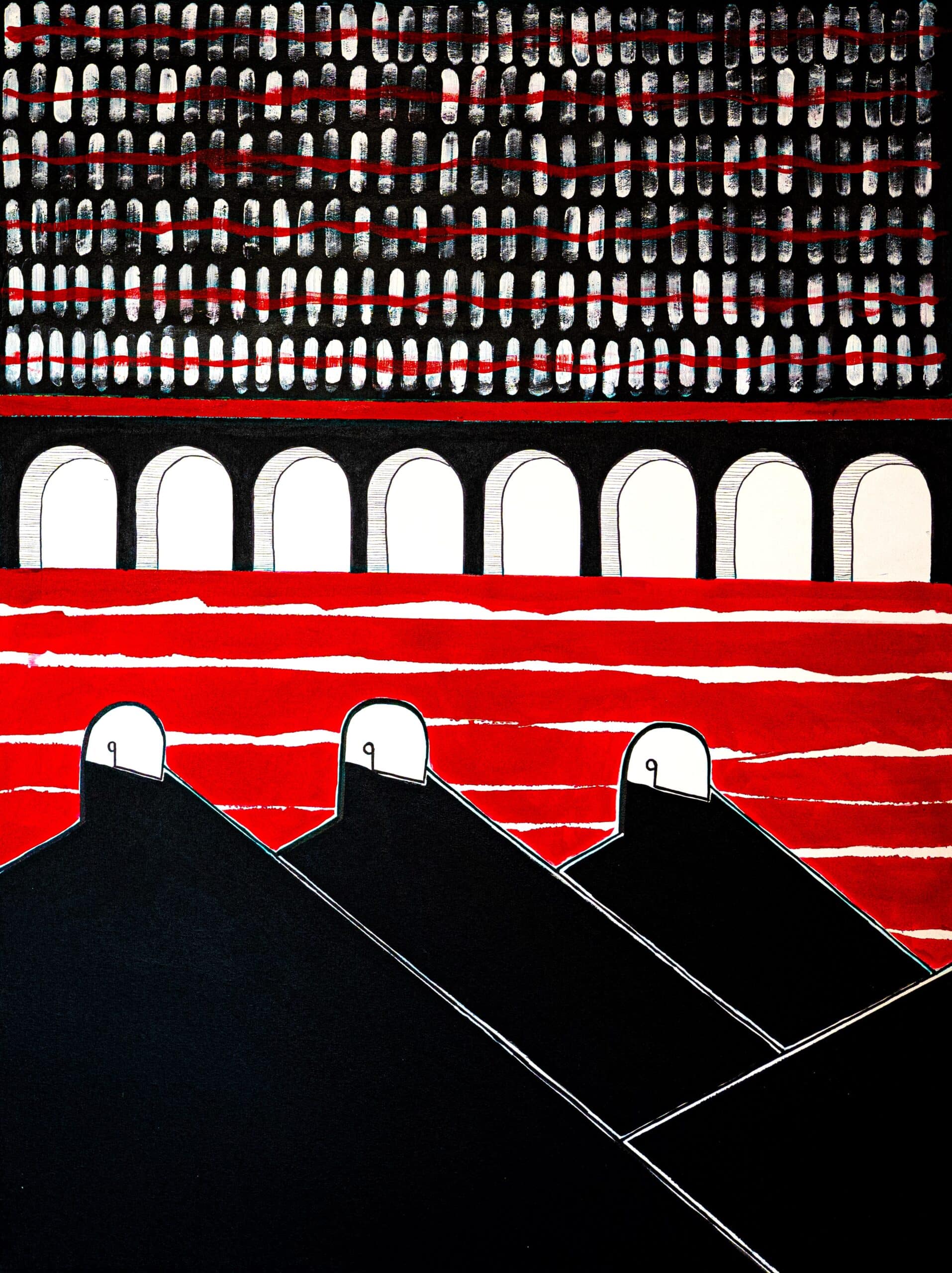
Q: How has your work evolved since leaning into digital art?
C3: I think it changed a lot in late 2021 when I got an iPad. After that, I focused on digital art, tried to implement my skills into digital art, and I’m continuing to do that. And apart from my artistic side, maybe I am a political activist and I do consider myself a freedom fighter. And I was always involved in protests and anti-establishment movements throughout the years. And so they combined, I think, at some point in time. And here we are.
Q: What was your trajectory like from there?
C3: When I was 18 or 19, I got into college. I joined some political movements at my university. I used to design pieces and covers for some magazines that we put out. My trajectory as an artist became more serious in 2019 when my first piece sold– the piece is called Throne of Blood. That piece became my PFP, I created it before I joined NFTs. The particular style that I use nowadays started with that piece. I made it during very bloody months in Iran, when heavy protest was erupting all over the place– that time period was called Bloody November. During those months, many people were killed. That is when I painted Throne of Blood, which went on to sell to Mr. Pond three years later. That was the base of my current style, which was started and rooted in the Iranian movement and Iranian uprising.
Q: Can you give a little bit of Iranian history for people who may not be familiar?
C3: In 1979, there was an Islamic revolution in Iran. Islamists took over and kicked the last king of Iran out, and Islamists seized control. Since that time, it has been a dystopian, Orwellian nightmare. It has been full of blood and torture. After that, Iranians lived under a kind of Islamic dictatorship. My whole world is living through an Orwellian 1984 dystopia.
I have this insane amount of anger and rage and sadness in me, and I try to channel it into my art.
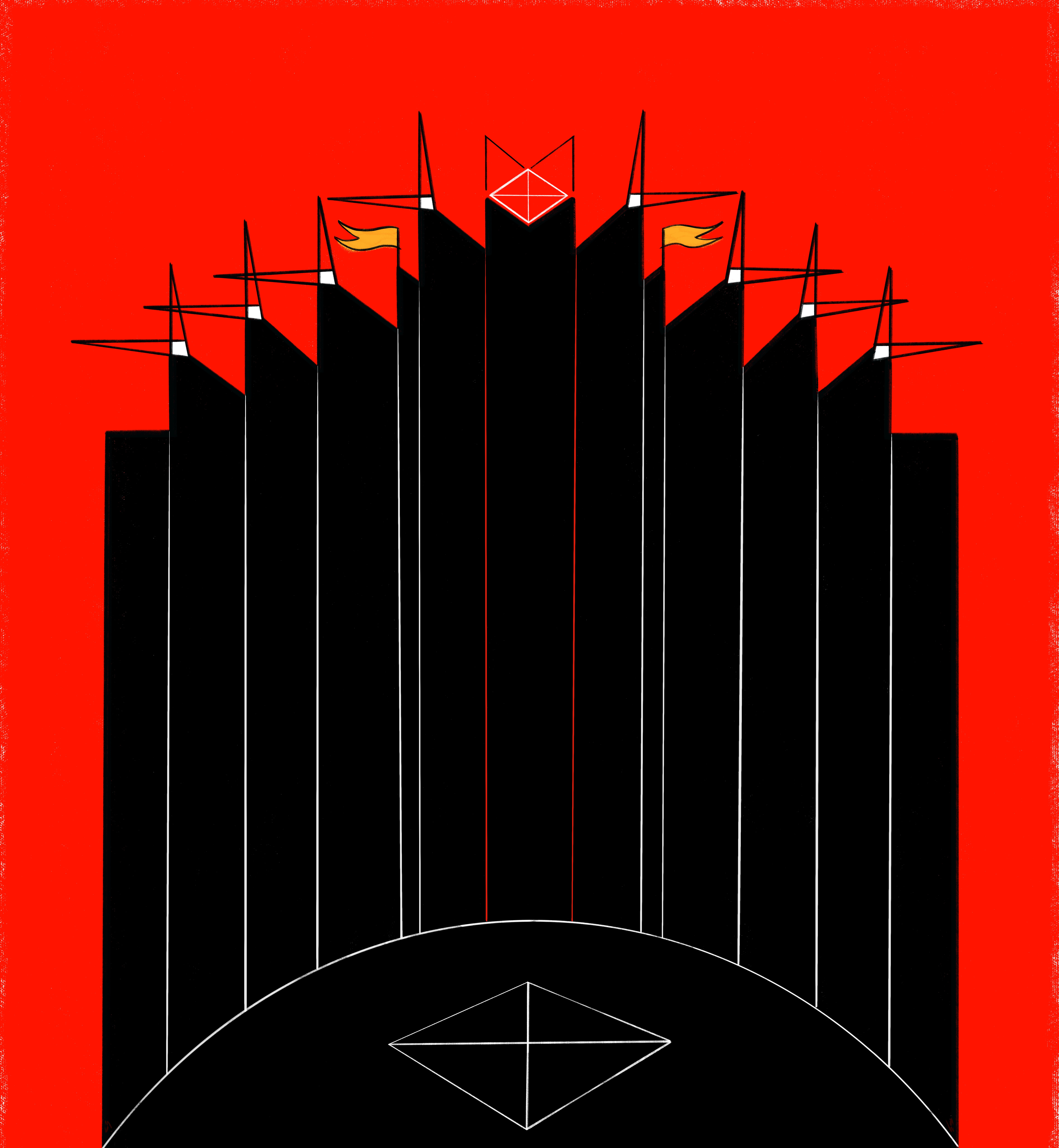
Q: Can you tell us a little bit more about the current protests?
C3: This current uprising started a few months ago. I hope that it will end in a revolution. A young girl called Mahsa Amini was captured by morality police. They captured her because of improper hijab and she was beaten and killed by morality police. That murder started a fire in Iran. About four months ago, it all erupted. Society was on the edge for many years before that. Tension was building quietly in 2019, but it was kind of slow for a while because the police killed a lot of people back then. When you kill a lot of people, things tend to get quiet for a while. When Masha Amini was murdered a few months ago, the news got out that she was killed because of some ridiculous rule, so a lot of anger erupted. People took to the streets. There were huge, massive protests in every city and town that caused a lot of noise all over the world. An uprising like that was never seen before– this is very unique and very prominent. It is all still going, and I hope that there will be a revolution in the end. I always say this– there is this mentality in Iranian culture that Iran is being held hostage by the minority of people. There are people who are very dark and evil, and then people that Islamic Republic of Iran has taken hostage. People are now trying to release themselves from this hostage situation. I hope that it will happen.
Q: What does it mean to create protest art? How has this particular style and subject evolved for you?
C3: From my college days, when I was 18 or 19, there was this movement called the Green Movement. From that moment, I tried to participate in all of this kind of protest and anti-establishment art making. I didn’t have a certain style until about 2018, when I started trying to develop better, more recognizable, and more focused art. I wanted to put my story and messages into that art. It became this current style that I call “Dystopians”. During all of this time, I used to– and I still do it sometimes– do graffiti art in the streets at night against the regime. I have this insane amount of anger and rage and sadness in me, and I try to channel it into my art. I chose a more minimalistic style, partially as a way to distance myself from the elements that could get me into trouble. The pieces don’t have that many direct references to the current regime.
Q: Could you elaborate on that style? What does that entail?
C3: It is some kind of a vague world that I created and I wanted to, maybe it was in my mind, to protect myself if I get in trouble because of making this art. I could say that maybe these paintings had nothing to do with politics and they are just minimal cartoons or something that look good or look clean or something like that. So it was a kind of defense mechanism to distance myself from the more prominent looks that could tie me to anti-establishment art. If I get into trouble or if I get arrested sometime, I can deny that I have done any political art because my work doesn’t look like Iran.
Anonymity is the most important part of all of this. For a lot of people, people in Europe or America, anonymity is not a matter of life and death.
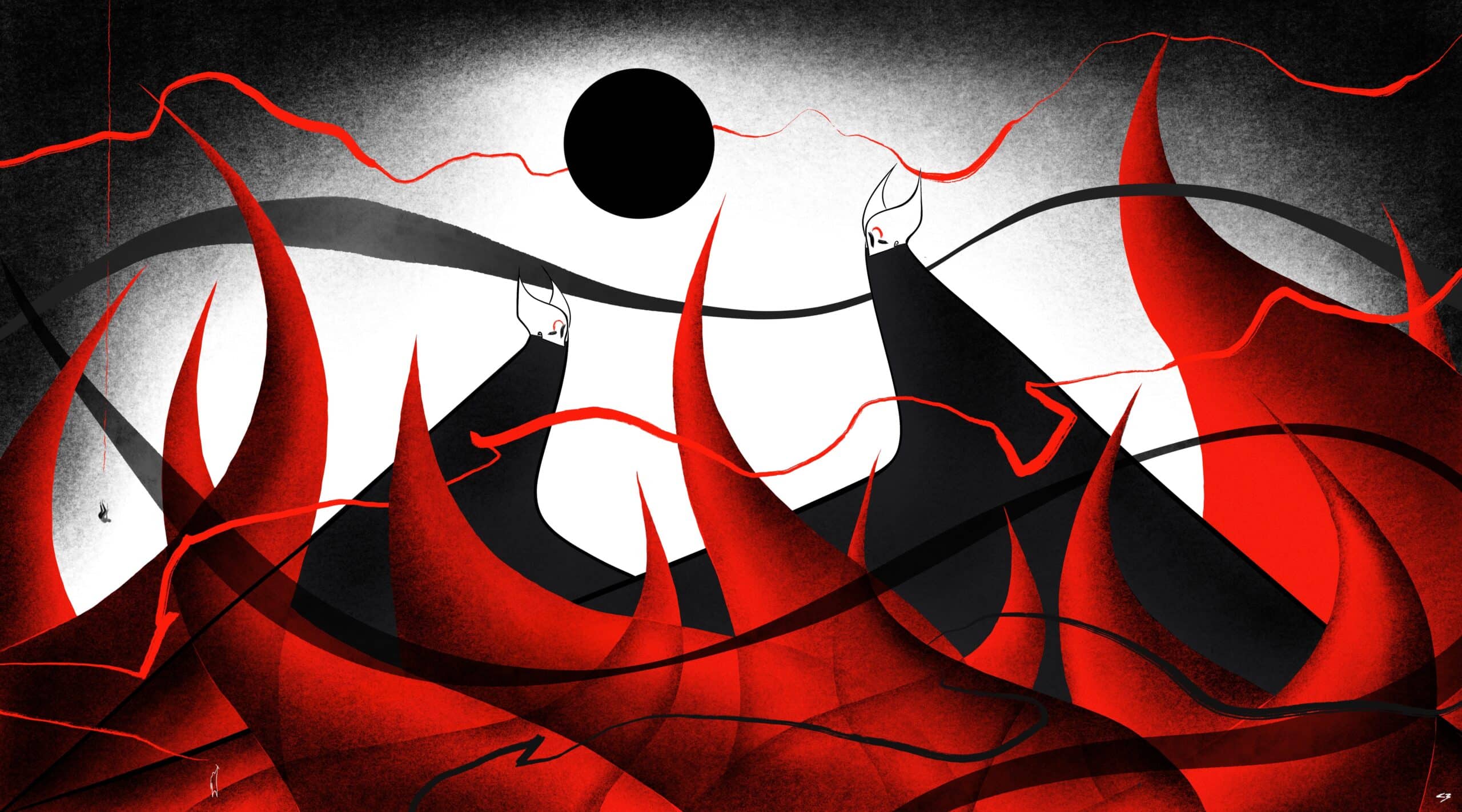
Q: People in crypto choose to be anonymous for all sorts of reasons. Does anonymity play a role in your life?
C3: For a lot of people who live in Third World countries or artists who live in countries that have dictators that keep them from expressing themselves, the anonymity part is very important. It is a matter of life and death for them. The internet is a very powerful tool that people can use to get their messages out. When I minted my first piece, I had zero expectation of it selling or even people seeing my art. I just wanted to get this message out, or at least try to document the stories that I had. I wanted people to know. We barely see news about Iran in the news outlets. The anonymity part is like magic for a lot of people who are in these kinds of situations. In my situation, it works very well. I’m still doing this and I’m still living in Tehran– no one knows that I do this. Anonymity is the most important part of all of this. For a lot of people, people in Europe or America, anonymity is not a matter of life and death.
Q: In the crypto world, the NFT, crypto art world, people really do think about you as a prominent fighter for free speech in all different facets. You’ve managed to become synonymous with that, despite having an identity that was created with no attachment to your real name or your real identity. What are your thoughts on that?
C3: I have been very lucky that a lot of people have seen my art, and a lot of collectors that are kind to me. I’m glad to have a lot of friends like Xer0x. I do consider myself a fighter for freedom. I am concerned that, in the future, there will be an even larger effort to restrict people’s freedom of speech, freedom to live, freedom of everything. I worry that there will be very tight restrictions on getting information out, and on getting your voice out. We have that problem now in Iran, and I don’t want my art to just be about Iran. That’s why I created this whole world. I try to summarize all these issues through my art. I try, and I hope I get that right.

